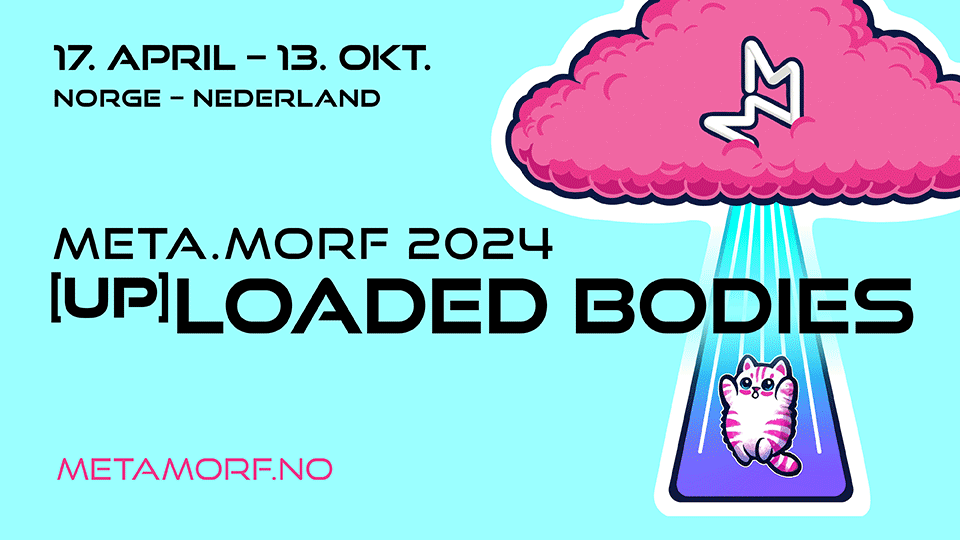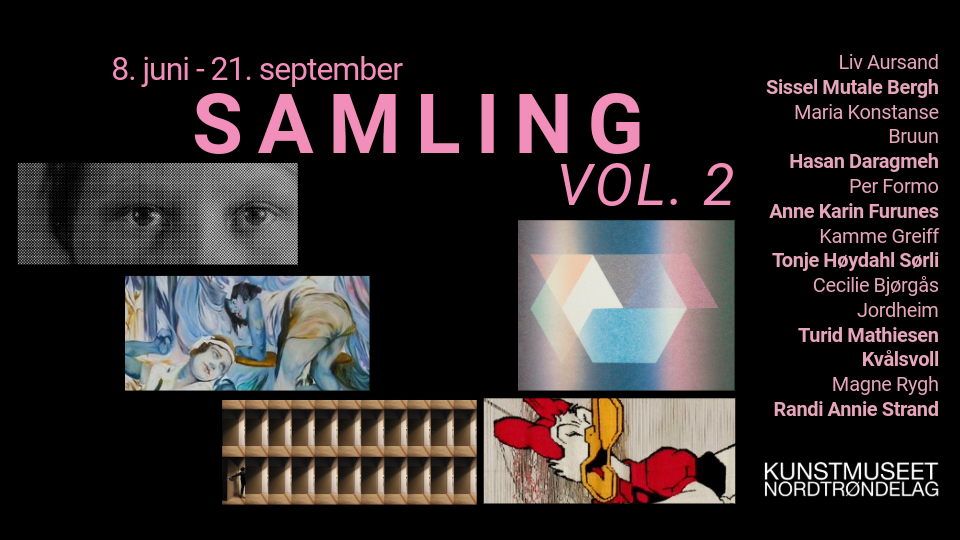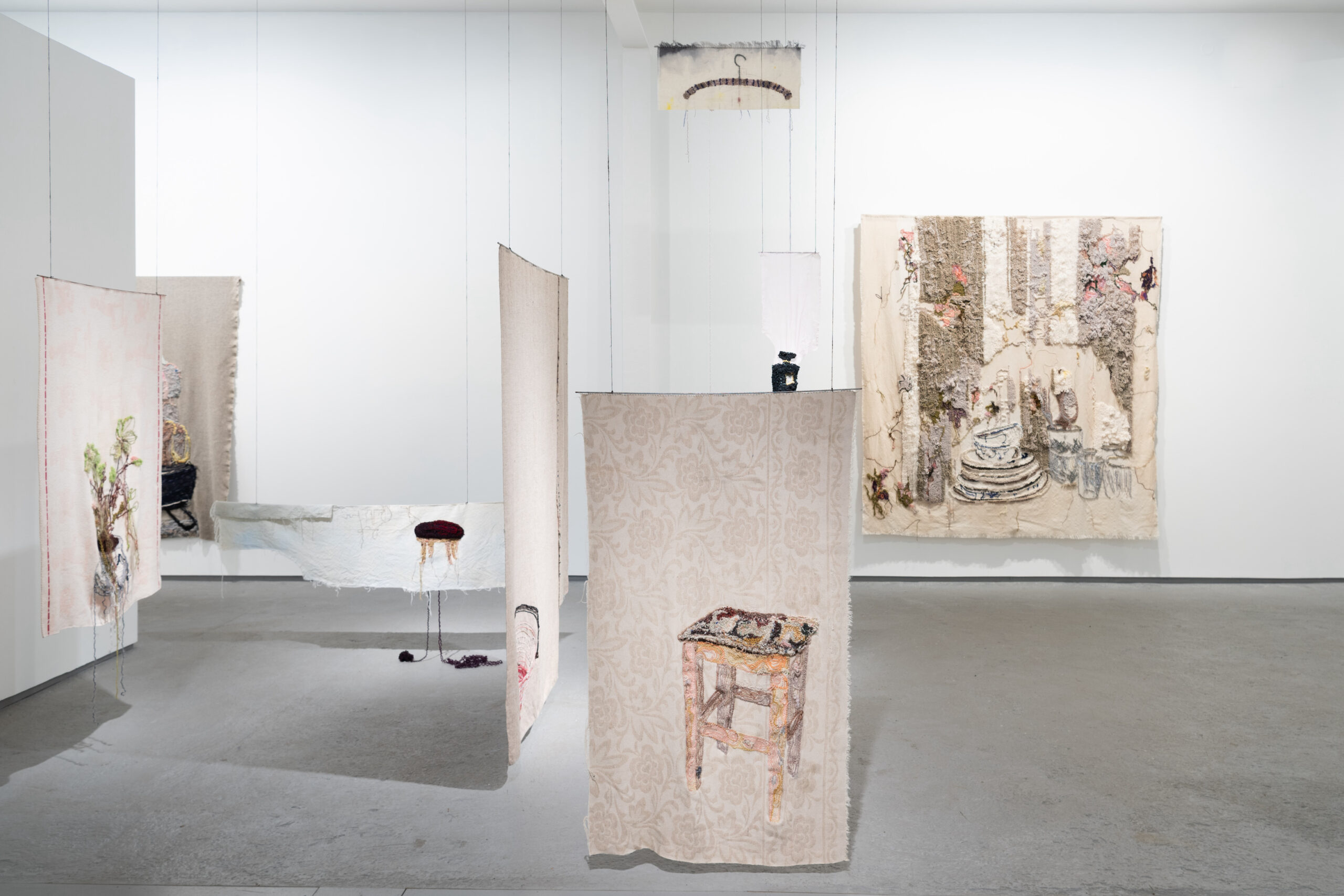The Future is ____.
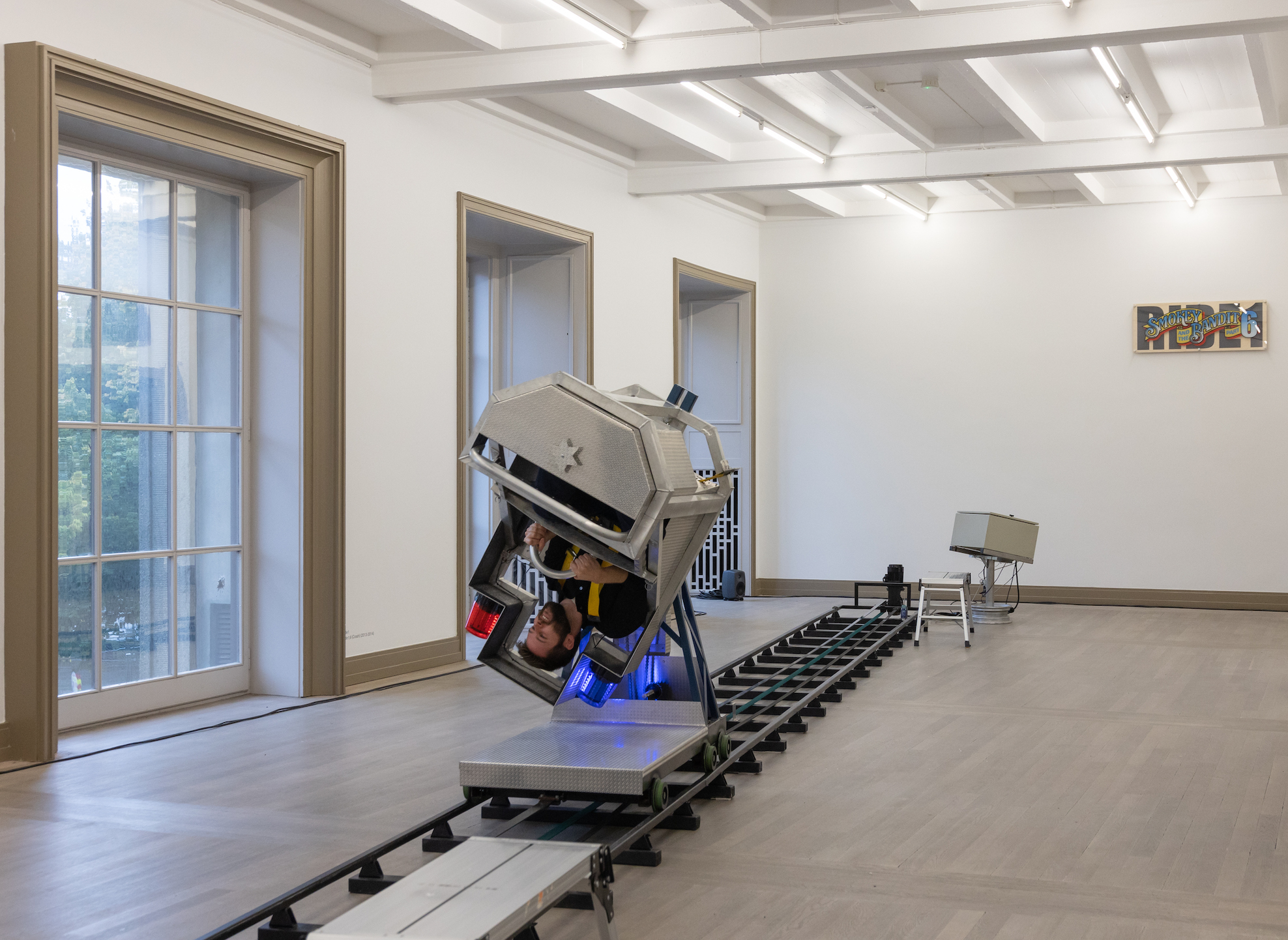
Opinion, Thea Barslund 10.10.2022
As I arrive at Trondheim Kunstmuseum in Bispegata for the exhibition The Future is ____., I can hear a choir somewhere on the ground floor. They’re singing John Lennon’s “Imagine”. There’s a crowd in front of the entrance, and I don’t catch a glimpse of the choir. I decide instead to wander round the exhibition. As I’m climbing the stairs, I can’t help but think of John Lennon and Yoko Ono’s rather simplistic hopes for the future. In their “Bed-ins for Peace” protest of 1969, the couple stayed in bed in the presidential suite at the Hilton Hotel in Amsterdam for a week to draw attention to the Vietnam War. “Imagine all the people, living life in peace.” A peaceful future might be easy to hope for, but it’s somewhat harder to imagine. The future is often discussed in connection with change, and I’m probably not alone in feeling that one of the characteristics of the period we’re living through is a break with past structures and societal systems. I find it important that art takes a stand on the present time and its complexities.
The Future is ____. is Trondheim Kunstmuseum’s contribution to Queer Culture Year, a nationwide programme of events to mark fifty years since the legalisation of homosexuality in Norway. But this exhibition is about more than just a celebration of gay rights; it seeks to engage the visitor’s sensory apparatus to achieve a physical sense of the future. I like the premise for the exhibition. I have the impression that exhibitions are generally more successful when they manage to engage the visitor, which is certainly what this one does.
The first work I encounter is RIDE1:6 (CRASH) by Ronny Hansen, Jonas Kjellgren, and Stig Sjölund. This consists of a carriage on rails that trundles from one end of the room to the other, like a carousel. During the ride, the person sitting in the carriage is turned upside down, allowing them to see the showroom from a new angle. I don’t try it out myself, because it makes me feel uneasy just looking at. But a sense of unease is precisely what the work is all about. It requires a degree of courage on the part of the visitor to take a ride in the carriage and hence to experience the work to the full. One could view it as a symbol for the courage one needs to encounter others; expanding one’s horizons can sometimes be uncomfortable. RIDE1:6 (CRASH) sets a level of expectation about what the exhibition as a whole is striving for: to disturb our perspectives and to make us feel our existence in our bodies.

In the sky-lit hall, I meet my own reflection in the mirrored surface of a large box, placed roughly at the centre of the room. On stepping inside the box one discovers a space where everything is upside down. Paintings from TKM’s collection hang upside down on the walls, there’s a ceiling light fixed to the floor and a chair standing on the ceiling. The exhibition leaflet informs me that this room is not a work as such, but an initiative of the curatorial team to give visitors another “upside-down” experience. Unfortunately, this upside-down room robs RIDE1:6 (CRASH) of its intensity. Perhaps the curatorial team took their inspiration from the cover of Harry’s House, the latest album by pop singer Harry Styles, released in May. It feels a bit like a cardboard cut-out and rather didactic, as if the curatorial team were saying, “Here you really will experience something different!” instead of letting the works talk for themselves. In addition, the mirror box distracts from the works near the entrance, such as TRACKS 1 by Brittany Nelson.
Nelson’s TRACKS 1 is a black and white photograph, which seems at first glance to depict two parallel tracks on a mountainside. It’s a rather introverted image compared to the other works in the exhibition, but even so, it holds my attention. There’s something dystopian about the picture. I read that it was taken on Mars. In 2004, NASA sent two rovers, Opportunity and Spirit, on a mission to explore the terrain and the possibilities for setting up a habitation on the planet. Nelson has made a bromoil print of the image, and it gets you thinking. Is the future in outer space? Would it result in a kind of “rebirth” of humanity if we moved away from all the culture we know? What would our history look like if it were retold? I imagine the first to find a home in outer space will be those with the most money here on earth. And if that’s how it is, would anyone other than the conquerors get a chance to write our history? When one tries to imagine how a new civilisation might be built, structured, and organised, it also seems relevant to think about the structures that prevail right now.
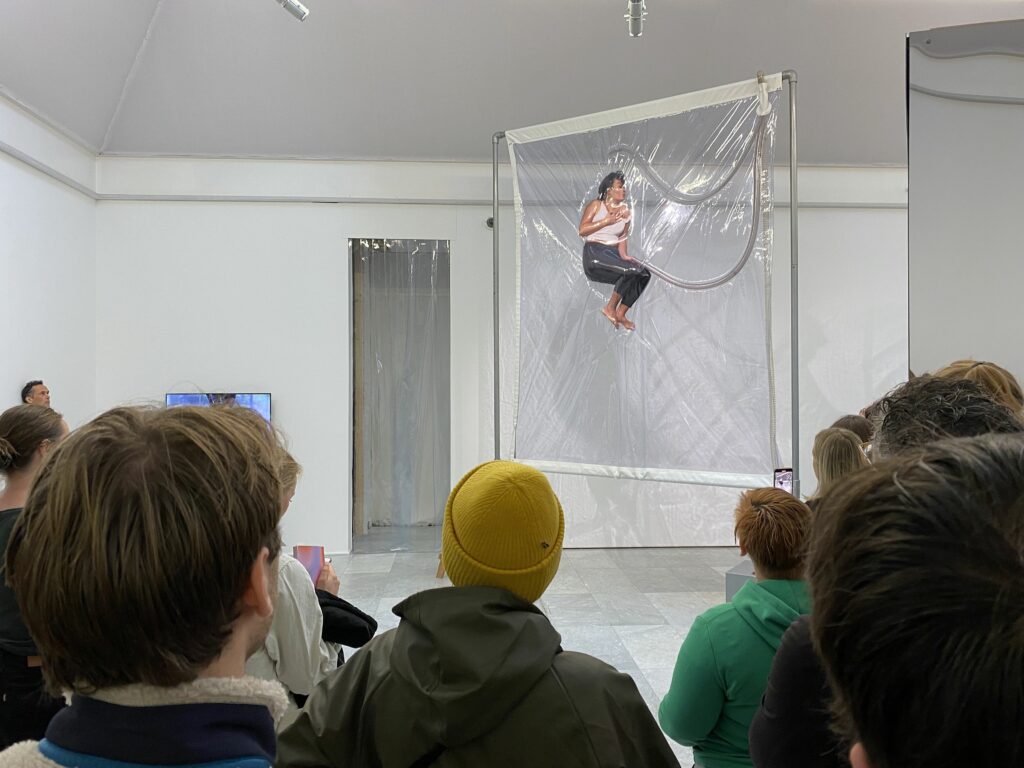
Behind the mirror box stands Lawrence Malstaf’s work Shrink. The installation as such consists of two layers of soft, transparent PVC stretched inside a scaffold frame. It is both minimalist and an imposing presence in the room. If you intend to see The Future is ____., you should time your visit to coincide with one of the performances within the installation. When I was there, a young woman happened to be performing. She hangs suspended between the PVC layers, as if vacuum packed. The vacuum is created by rubber tubes connected to a pump, one of which sucks out the air, causing the PVC to close tightly around the woman’s body. She has her thumb inserted in a second rubber tube. Every now and then she removes her thumb to let a little air into the envelope, at which point she changes her body position. One observes how the space for her body is steadily reduced and her breathing becomes more difficult.

The full performance lasts about twenty minutes, and as I stand there watching, it feels like an eternity. While admiring the appearance and the mechanics of the whole thing, I can’t help wondering whether the performer can actually breathe. Visitors seem glued to the floor as they stare at the woman. The unsettling sensation of standing around idly while watching someone who may not be able to breathe could perhaps be compared to the feeling of powerlessness one has in the face of the world’s injustices. At the same time, the performance is clearly taking place under controlled circumstances. The work has a certain sensational value; it functions like “click bait”. We are fascinated by things we find disturbing. Could it be a symptom of a society that is overexposed to images and data? The only things that get through to us are those that stir the strongest emotions.
What’s the idea behind vacuum-packing a human? Is she being preserved for the future? Shrink can also be read as a call to climate action. When eventually we run out of clean air, how will we manage to survive? The work is from 1995, and although I like the fact that art can take on new or additional meanings depending on the context in which it is shown, I would be interested to know Malstaf’s original intention when he created the work. Shrink is without doubt the exhibition’s attention-grabber, and rightfully so. It is delicate, imposing, physical, alienating, and intimate, all at the same time.

Before coming to the exhibition, I had read that it included a work by Pipilotti Rist. Like so many others, I’m a fan of the renowned video artist. Rist is known for her large immersive video projections with their psychedelic colours, featuring landscapes and bodies that flow into one another until they become unrecognisable. This is also true of her work Stir heart, rinse heart, which is on show in The Future is ____. divided between two rooms. In one room the floor is dotted with circular rugs. Visitors are invited to sit down on them and relax while watching the projections. When I saw Pipilotti Rist’s exhibition Open My Glade at Louisiana in Denmark in 2019, some of the rooms were equipped with beanbag cushions, some with living-room furniture, and one with an array of beds to lie on. The circular rugs on the floor at TKM hardly offer that level of comfort to anyone wanting to lie down and take their time with the work. I find it unlikely that it was Rist herself who chose them.
In the room with the rugs, there are two projections that overlap. Like a collage. The one projection, which fills most of the space, shows views of something reminiscent of material passing through the human digestive tract. Through channels, accompanied by blood cells and secretions. The inner landscape morphs into an outer landscape, at which point one has to abandon any notion of narrative and accept the soothing ambience of reddish hues.
On the right side of the room is the second, smaller projection that overlaps. This shows images of Pipilotti Rist in a pair of red shoes strolling around what looks like a big city. The elements of the red shoes and the city hark back to Rist’s earlier work Ever is All Over, which gained fame when the pop singer Beyoncé took it as inspiration for her music video Hold Up. A woman in red shoes symbolises strength and freedom; a woman whose contact with the earth is marked by such a vivid colour is a woman who is not afraid to occupy space, to stand her ground, or draw attention to herself. As Rist walks through town, men kneel before her, and she presses a red-coloured fingertip to their foreheads, leaving a mark. In Hindu tradition, it is unmarried women and girls who wear a red dot on their foreheads. In this scene, Rist plays with gender dynamics. She anoints these men with her feminine strength, perhaps allowing them thereby to become more vulnerable, feminine individuals. In the next scene, one sees a sumptuously laid table, but without any guests. Just one woman is sitting at the table. On her plate is a blood orange, which she peels and eats. Perhaps it is the point of view of the orange we are given in the larger projection, as it passes through her gut.
In the second room of Stir heart, rinse heart, there are oranges scattered on the floor. Some are in plastic bags, from which a few seem to have just rolled out. Suspended from the ceiling are various pieces of transparent plastic, specific yet unspecific in their shapes. They appear to be items of plastic packaging. Trays moulded to hold a product safely inside a box. The projections in this room bring us up close to body hair, making it look like a red-tinted forest. Stir heart, rinse heart can be read as Pipilotti Rist’s contribution to the vision of a feminist future, in which experiences are processed through features of the body, both internal and external, and where femininity is celebrated.
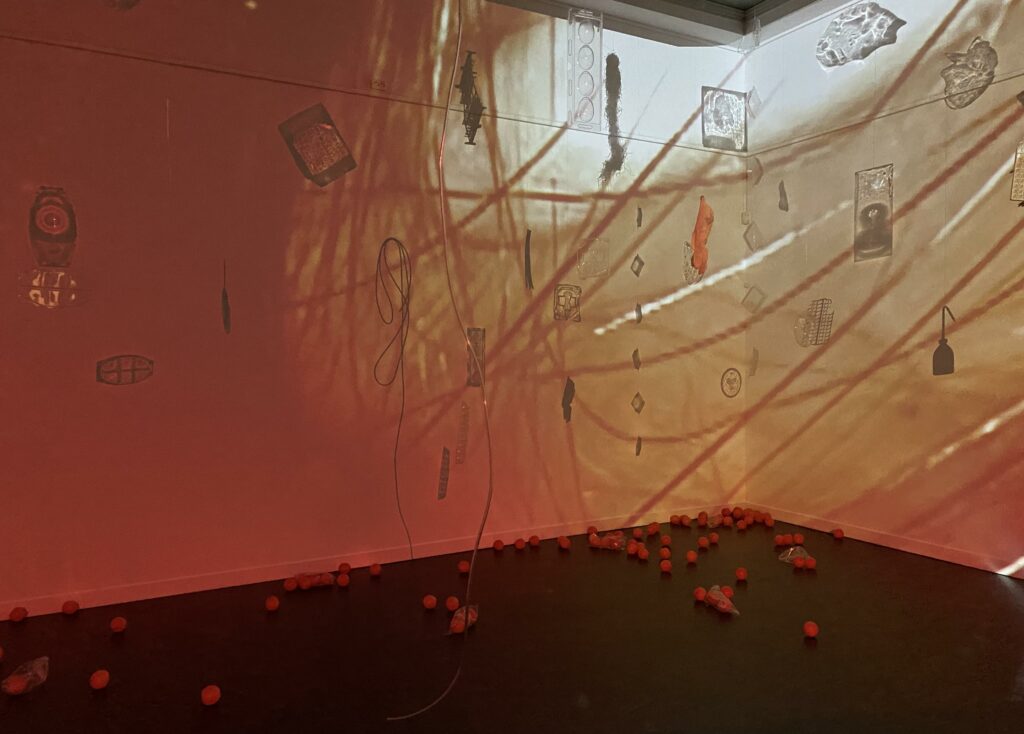
The transparent plastic elements in Stir heart, rinse heart echo the Shrink installation, and I imagine the imprint the performer might leave in the PVC if it were to harden around her. For me, plastic forms a satisfying link between these two works. The idea of the moulded forms suggests the categories and pigeon holes we put each other in. Fitting into a binary narrative can be so restrictive if it isn’t authentic. It’s hard to feel free when there’s no room to move. As far as identity politics is concerned, there can be little doubt that society has changed since 1972. I have the impression, most people don’t care at all who others sleep with. At the same time, I have noticed considerable variation in the degree to which people are aware of the way their own actions or use of language help to perpetuate restrictive and negative structures.
Zheng Bo’s work Pteridophilia 2 is a room-filling installation. Scattered about the floor are potted ferns and large cushion seats made of natural woven fibre, each equipped with a sketch pad and pencil. Hanging on the walls at a height conducive to being watched from the cushions are two screens showing videos. While sitting there, you can draw the ferns. One screen shows various clips of insects in the process of reproducing. The second shows men in a forest in Taiwan engaging in intimate intercourse with the forest ferns. In Taiwan, the fern is highly valued by the indigenous people, although not by Japanese colonists or nationalists. At the same time, ferns are widely eaten as a delicacy in Asia. In this installation, Bo seeks to establish a bodily relationship between humans and plants while also questioning different forms of consumption for pleasure: eating and sex. In this context, the fern becomes a symbol for contemporary consumer culture, power hierarchies, and Taiwan’s colonial history. It is also a work that points to a possible future in which nature and plants are not viewed as something separate from us, but as things we live in symbiosis with.

With its many layers, Pteridophilia 2 is highly complex, and without a description of the work, one is likely to find it confusing. The description is, however, fairly graphic and leaves little to the imagination. This was in fact the second time I had seen the work. The first time was in Berlin back in 2019. On both occasions I didn’t linger long in the installation, because the sound track from the video with the men in the forest is pervasive and a little off-putting. One hears their moans and groans of pleasure, and it gives me a sense of being obliged to watch something I shouldn’t have seen. Like a wall flower. Even so, I like the work. The fact that it makes me feel uncomfortable merely reinforces its message. For me, it is a consummate piece that addresses important themes.
In the last room of the exhibition, we find two rather camp works by Anja Carr; her Soup Series and Missed Call. The former consists of twelve photographs hung on the walls. These show close-ups of Carr’s face lying level with the surface of various colourful soups. The soups contain, among other things, octopus arms, shellfish, fish, fish roe, seaweed, and lemon slices. Carr appears almost to be on the point of going under. But despite being in imminent danger of drowning, she is still wearing immaculate make-up.
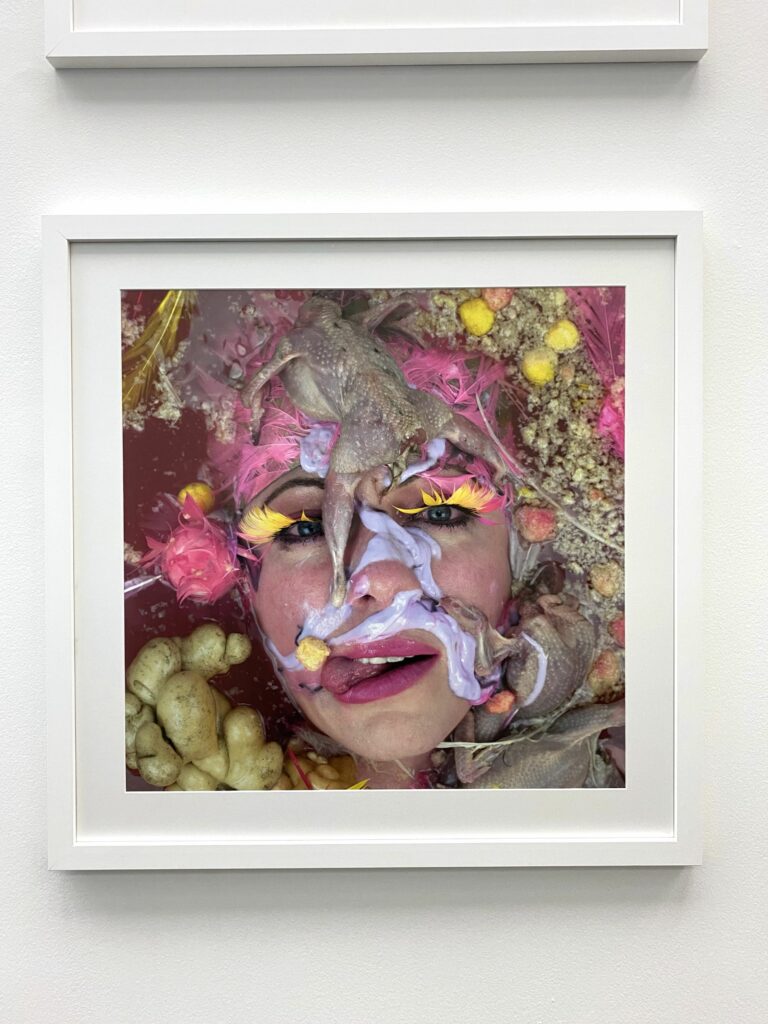
I interpret Soup Series as an allusion to the fact that in contemporary society we are drowning in the flood of images that reach our screens via the media. It becomes steadily more difficult to navigate a world where the number of forms of expression is forever increasing, where definitions of identity are unclear, and where one has access to a thousand perspectives other than one’s own. On top of that there’s all the pressure from social media and the male-gazing patriarchy to cultivate a certain look. Hardly surprising one sometimes has the feeling of treading water and struggling to keep afloat.
The work Missed Call consists of a large inflated octopus sitting on top of a basin that is too small and filled with black balls, or possibly eggs. The octopus is bright blue and its eight arms are reaching out into every part of the room. In each it holds a recognisable object associated with a busy everyday life. Instead of suction cups, along the underside of its arms the octopus has nipples.
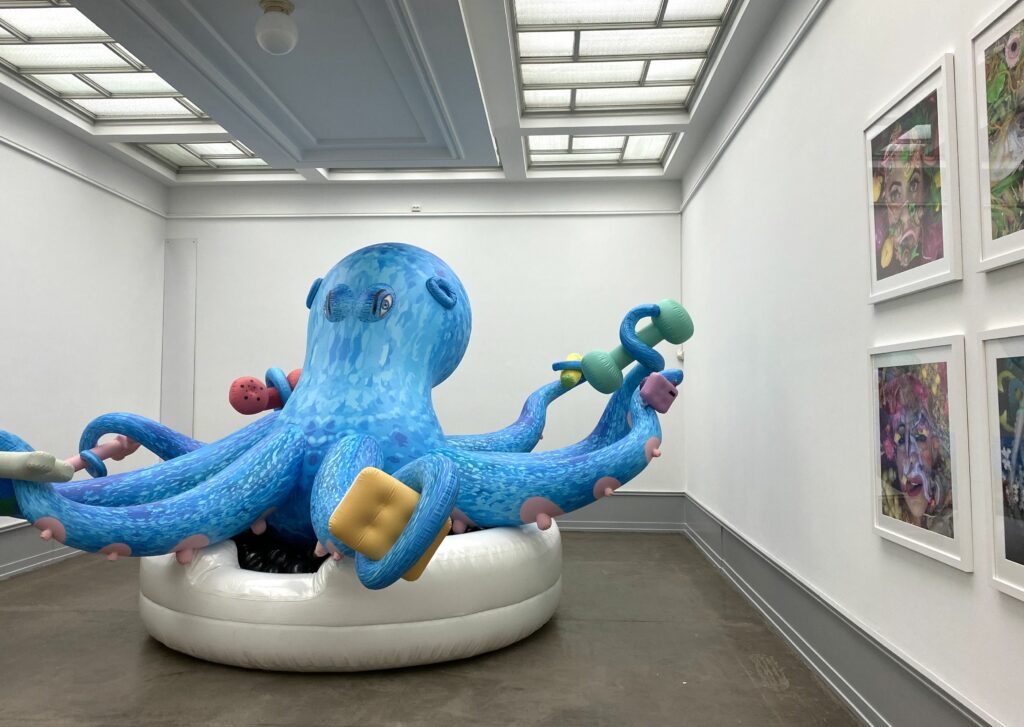
The Soup Series links in well with Missed Call, which also addresses the way the modern individual tackles existence. The octopus’s nipples together with the basin filled with black eggs suggest associations with motherhood and an even greater workload. The objects from everyday life, firmly held in the eight arms, present a picture of all the tasks that have to be dealt with and the qualities one needs to do them. As a child, one barely realises that one’s mother is a person with an identity separate from her role as mother. I myself find that the older I become, the more clearly I appreciate the many aspects and qualities my mother possesses. I imagine the role of mother in particular may have become even more difficult to navigate, given all the social expectations to work full-time and to manage the household chores in addition to bringing up children in an attentive and caring way. Not to mention the pressures she feels to market herself and her happy life on social media. As a mother it must be so hard to find a moment of peace and quiet just for oneself.
Although we have come a long way today, for example, with the introduction of dedicated paternity leave, there is still a broad imbalance in the amount of responsibility mothers are expected to take compared to fathers. Evidence for this can be found in Den Danske Ordbog (the standard dictionary of the Danish language). There, the word “familiefar” (in English: “family man”; literally, “family father”) is defined as “a man with a wife and children who lives an ordinary life as a father and husband”. That’s fine as far as it goes, but Danish has no dictionary equivalent for a woman. The nearest counterpart to “family man” in Danish is simply “mor” (mother), because it is implicit in the role of a mother that she should be present as a caregiver for her children. I know that a growing number of women are opposed to dedicated paternity leave, since it entails a reduction of the amount of time the mother has to build a relationship with her child. Nonetheless, I want to speak out in favour of those men who happily embrace paternity leave. Regulating the distribution of postnatal parental leave is the only quantifiable tool the state has to support equality in family life.
In her review of The Future is ____., NRK’s art critic Mona Pahle Bjerke writes: “The Future is ____. is playful and full of engaging moments. With its many invitations to active participation, this is an excellent exhibition for children and teenagers.” I fully agree. But does it go any further than that? It’s hard to say. The curation is clumsy; one has the impression that the works have simply been installed where there was space for them, without much thought for the best way to present them or how they interact with one another. Sadly, this means that the smaller works and the pictures on the walls are easily overlooked.
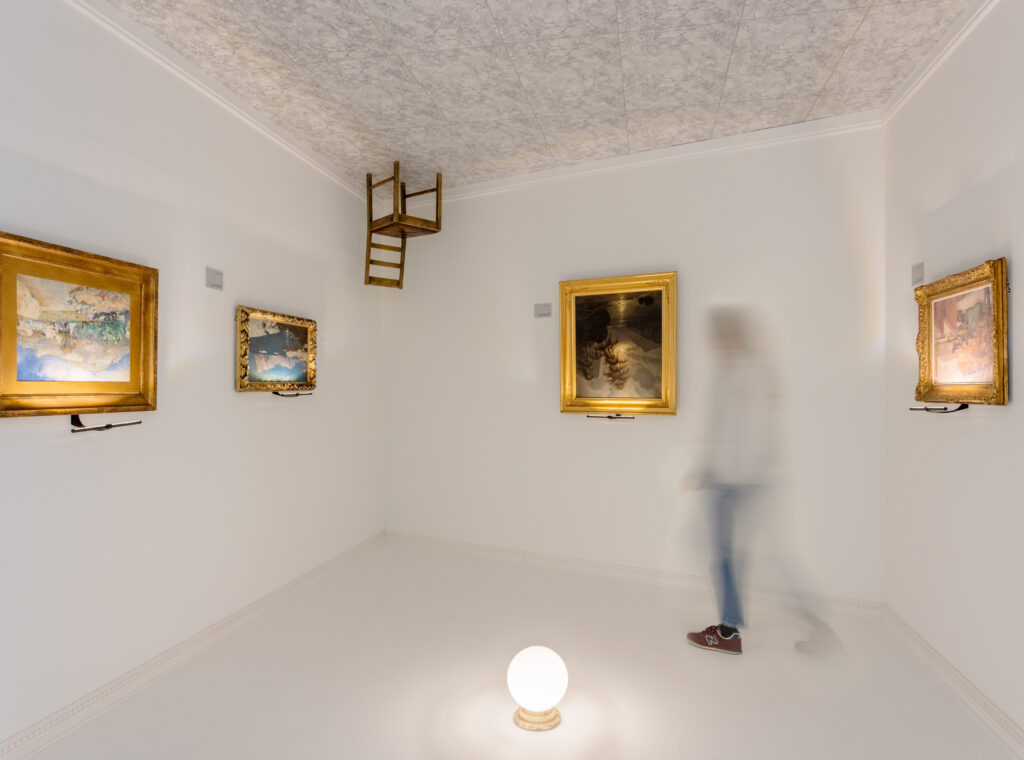
Several of the works encourage reflection on important contemporary issues, but considering this is TKM’s contribution to Queer Culture Year, I find it falls short. The social debate around queerness has come a long way during and since the Covid crisis, but all the works in the show are from 2019 or earlier (with the exception of Stig Sjölund’s performance, where he lays out tarot cards for people). The dynamics that are presented are very largely between people who would identify as a woman or a man; no other perspectives are represented. I would argue that a debate about feminism and queerness today is lacking if it fails to include non-binary and non-gender conforming perspectives. Queerness is about more than just different sexualities. On the other hand, this might reflect a deliberate strategy on the part of the curatorial team, namely to shift the focus away from the central queer topics and towards bodily sensation, because this is more general and possibly more inclusive for the cisgender, straight majority. To the extent that the strategy is deliberate, it succeeds; but addressing topics in the form of debates that subordinate minorities to the premises of the majority seems to me to be an outdated approach. I feel TKM would have been better served with an exhibition that challenged our notions of queerness.
In conclusion, I can recommend The Future is ____. as definitely worth a visit. Not as a means to learn about queerness, but because it is exciting, stimulating, and fun. And because everyone should make up their own mind about it. No doubt my own reading of the exhibition is coloured by my personal background and what I bring to it. Even so, it says a lot about how far we have come that a large (state) institution like Trondheim Kunstmuseum is contributing to a celebration of queer culture, and that’s something I feel we really should be proud of.
The Future is ____.
Pipilotti Rist, Jeremy Shaw, Zheng Bo, Sandra Mujinga, Anja Carr, Børre Sæthre, Brittany Nelson, Lawrence Malstaf, Ride1 (Stig Sjølund, Jonas Kjellgren, and Ronny Hansson), Anne Breivik, John Anton Risan, Axel Salto, and others
Curator team: Marianne Zamecznik and staff members at TKM.
24 September 2022–05 March 2023, Trondheim Kunstmuseum
Original text translated by Peter Cripps / The Wordwrights
